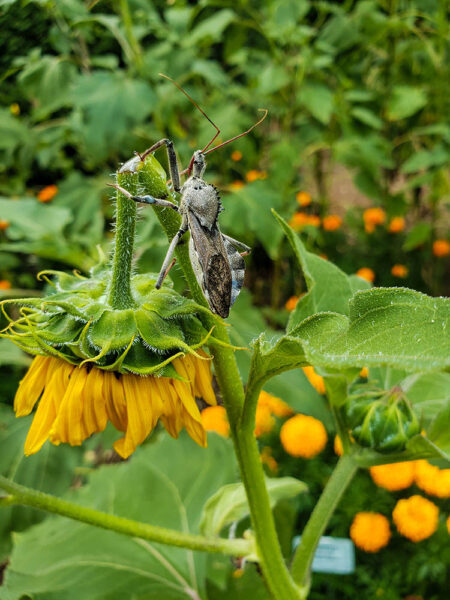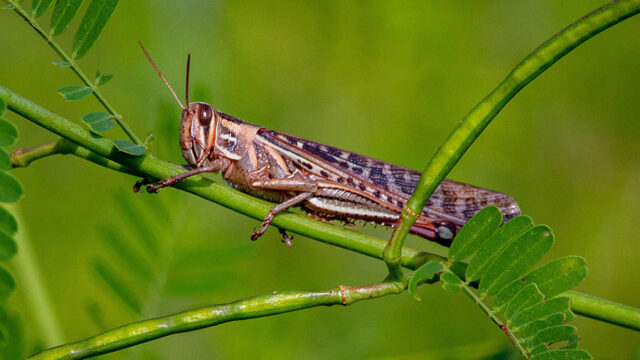It’s bug season! Squash beetles have skeletonized our native anemones and grasshoppers are everywhere, but predatory bugs are working diligently to overcome the invasion and our plants will recover and grow more lush and full than before—it’s Mother Nature’s Chelsea Chop. While well-known predatory insects like praying mantis and ladybugs are welcomed by gardeners everywhere, it’s also important to recognize the value of the less glamorous.

Assassin bugs are out in force this time of year. Their size and intimidating appearance (and name!) can make them an easy target of fear and misplaced blame in the garden. Showing up to consume plant-eating insects, assassin bugs might be wrongly accused based on circumstantial evidence. Click here for more about assassin bugs.
Here’s a partial list of garden pests on the menu:
Many small flying insects
Insect eggs
Armyworms
Asparagus Beetle Larvae and Eggs
Beetles
Corn Earworms
Grasshoppers
Scale
Spider Mites
Leafhoppers
Caterpillars
Mosquitoes
Centipedes
Crickets
Aphids
Learn about the bugs in your garden and how and why you can ditch pesticides, use targeted organics very sparingly and only in emergencies, and trust the predatory insects to do the work of bringing balance to your landscape. This balance makes gardening much less labor-intensive while also providing much-needed habitat for declining wildlife populations throughout the food web.
Identifying insects is easy at the amazing (and amusing) website whatsthatbug.com.
